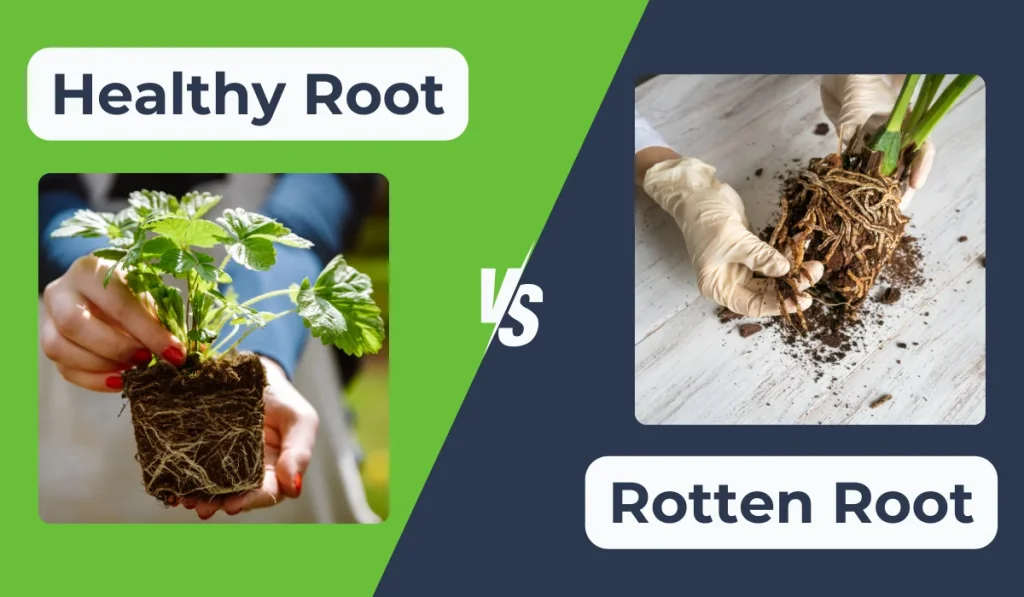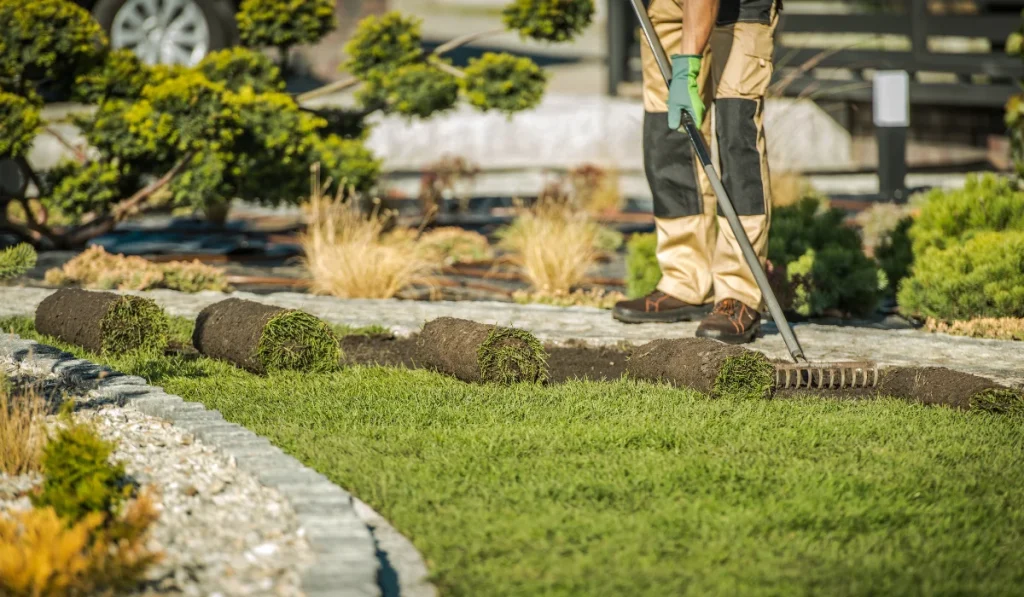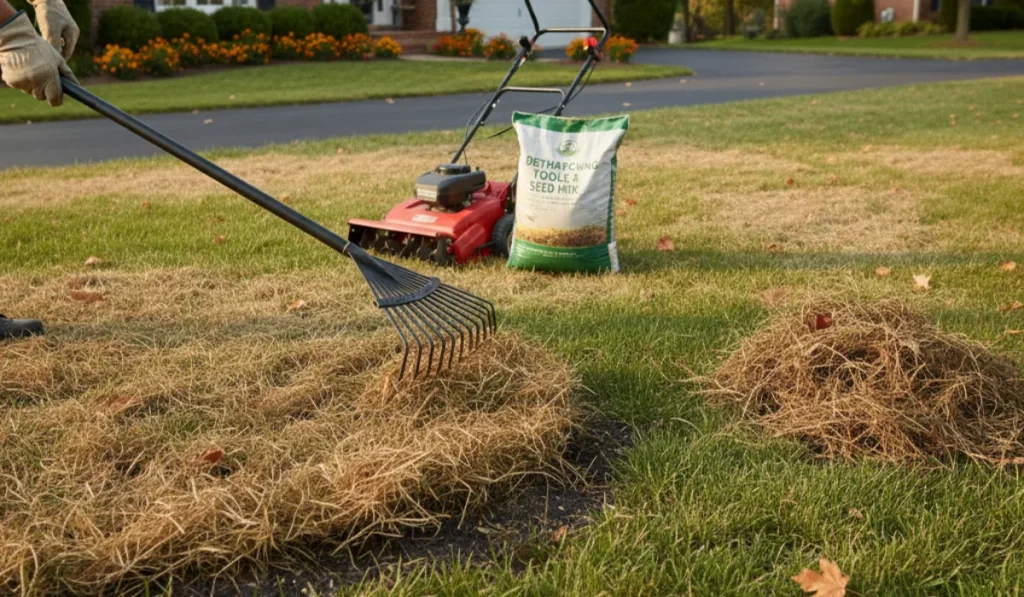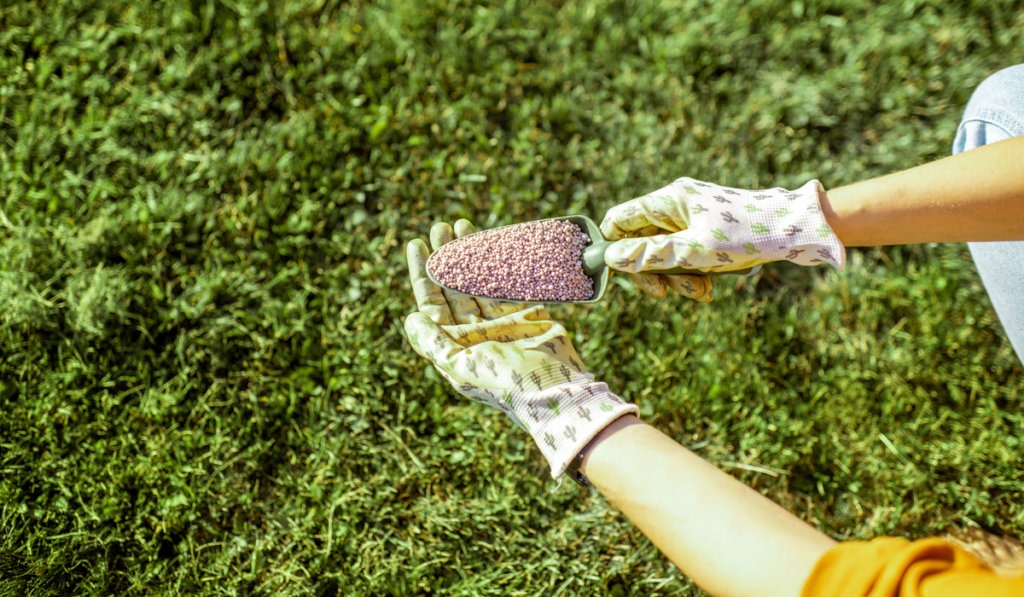Root rot is one of the most common plant problems, especially for folks who love their houseplants and indoor plants. It can sneak up fast, especially if you’re guilty of overwatering or using a pot without drainage holes.
But what does root rot look like exactly? And more importantly, how can you stop it before it kills your plant?
In this guide, we’ll cover the signs of root rot, how it progresses, and walk through each step you need to treat root rot effectively, whether you’re dealing with succulents, orchids, or common plants like pothos and monstera.
Key Takeaways
- Root rot shows up through mushy, dark roots, smelly, soggy soil, wilting leaves, yellowing, and slow plant growth.
- Early treatment means removing the plant, trimming rotten roots, cleaning the pot, and using fresh potting mix.
- Adding fungicide, fixing drainage, and holding off on watering help your plant recover and grow strong again.
- Healthy plants need dry soil between waterings, good drainage, and soil that doesn’t stay wet for too long.
Visual Signs of Root Rot
When it comes to spotting root rot early, knowing what to look for can make all the difference. These symptoms can show up above and below the soil, and catching them in time can save your plant.
Discolored, Mushy Roots
One of the clearest signs of root rot is when your plant roots turn brown or black and feel slimy or soft. These rotten roots are often the result of soil-borne pathogens like Pythium, Phytophthora, Rhizoctonia, and Fusarium, which thrive in wet soil.
Instead of healthy roots that are firm and light in color, you’re left with roots that collapse when you touch them.
Persistent Wet Soil
You can often spot root rot before it becomes severe just by paying attention to your soil conditions. If the potting mix is constantly damp or takes forever to dry, it’s a sign you’ve been overwatering or the plant is in a container without drainage holes.
Potted plants need well-draining soil to stay healthy.
Otherwise, root rot is almost inevitable.
Wilting Despite Moist Soil
Wilting is a confusing sign because most people think their plant needs more water. But when your plant wilts and the soil is already wet, it’s likely a plant disease like root rot. The roots can’t take up water, so the leaves droop and lose their firmness.
This is common in both indoor plants and outdoor setups.
Yellowing Leaves and Stunted Growth
Yellowing leaves are another early warning sign, especially if they start dropping off the plant. In many cases, nutrient deficiency from a damaged root system is the cause.
As it progresses, you’ll see slower growth, smaller leaves, and in extreme cases, dark spots or browning edges.
Unnatural Surface Growth or Discoloration on Soil
Besides changes in your plant, the soil surface itself can show visible signs of root rot.
Look for unusual patches of mold, algae, or even salt-like deposits forming on top of the soil. These can signal that pathogens are active below and that the soil has stayed saturated for too long.
You may also notice the soil taking on a darker, almost greasy appearance, which can be a visual clue of ongoing decay in the root ball.

How to Treat Root Rot
Don’t worry. If you catch it early, you can fix root rot and get your plant back to good health. Follow these steps to save your plant.
1. Remove the Plant From Its Pot
Carefully take the plant out of its container and shake off the potting soil. This exposes the root ball and lets you see how bad the damage is.
If you’re dealing with succulents or fragile roots, take your time and be gentle.
2. Rinse the Roots and Trim Away Rotten Roots
Rinse the roots under lukewarm water to wash away dirt and rot.
Use sterilized shears to cut away any soft, dark, or rotten roots. Between cuts, wipe your shears with bleach or rubbing alcohol to avoid spreading the plant disease.
3. Disinfect the Pot
Before repotting, scrub the container with a diluted bleach solution (1 part bleach to 9 parts water). This step kills lingering lawn fungus and any hidden pathogens that could cause root rot to return.
4. Repot in Fresh, Well-Draining Soil
Add fresh soil—preferably a potting mix with added perlite for better drainage.
If your plant had poor drainage before, now’s the time to fix it. Make sure the new pot has drainage holes so the soil conditions don’t lead to rot again.
5: Use Fungicide if Necessary
If the infection was severe or you’re treating high-value plants like orchids or monstera, consider applying a fungicide that targets Pythium, Phytophthora, or Fusarium.
This helps protect the remaining healthy roots as they recover.
6: Adjust Your Watering Routine
After repotting, hold off on watering until the top inch of soil dries out. Always use a watering can to control how much water your plant receives.
This prevents excess water from pooling and damaging the root system again.
How to Prevent Root Rot
Healthy roots mean healthy plants, and a little preventative lawn care goes a long way.
To prevent root rot, start by learning what your plant needs, especially when it comes to water. Some plants prefer dry conditions, while others need more moisture. Giving them the wrong amount is a common cause of root rot.
Watch your plants closely during the first few weeks after bringing home a new plant, and keep an eye out for early warning signs like fungus gnats, spores, or mold on the soil surface.
Frequently Asked Questions
Can root rot spread to other nearby plants?
Yes, root rot can spread to nearby plants through shared water trays, contaminated gardening tools, or infected soil. Always isolate sick plants, disinfect tools after use, and avoid letting water drain between pots to help stop the spread of disease.
What types of plants are most at risk for root rot?
Plants that prefer dry or fast-draining soil, like succulents, herbs, cacti, and certain houseplants, are more likely to suffer from root rot when kept in wet or poorly draining conditions for too long without enough airflow around the roots.
Can I reuse soil from a plant that had root rot?
It’s not recommended to reuse soil from any plant that had root rot because harmful pathogens can survive inside the soil and infect new plants, even if the soil looks dry, fresh, or has been sitting unused for a while.



